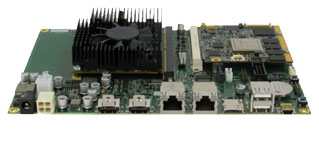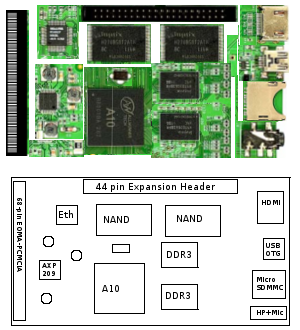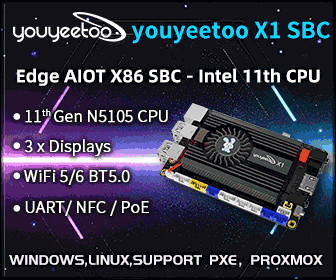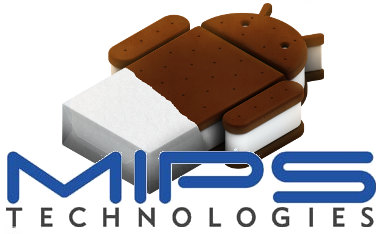Nvidia has just unveiled its Tegra 3 development kit, the Nvidia CARMA. The development kit codename has been crowdsourced as Nvidia asked its followers to propose a name and vote for the best name. This development kit particularly targets CUDA, Nvidia parallel computing platform and programming model that enables dramatic increases in computing performance by harnessing the power of the graphics processing unit (GPU). The CARMA hardware has been designed by Seco and features an NVIDIA Tegra 3 ARM Cortex A9 Quad-Core CPU and NVIDIA CUDA GPU QuatroTM. Here are the technical specs for the development kit: CPU NVIDIA Tegra 3 Quad-Core ARM A9 GPU NVIDIA QuadroTM 1000M with 96 CUDA Cores Memory • CPU Memory: 2 GB • GPU Memory: 2 GB Peak Performance 270 Single Precision GFlops CPU – GPU Interface PCIe x4 Gen1 link Network 1x Gigabit Ethernet Storage 1x SATA Connector USB 3x USB 2.0 Display […]
Copy/Paste Text between Windows XP Host and Ubuntu Guest in VirtualBox
I’ve recently upgraded the amount of memory and graphics card in my computer to order to be able to smoothly run virtual machines and support 2 monitors. So instead of using dual boot for Windows XP and Ubuntu, I’m now running Ubuntu in VirtualBox. One thing, I wanted to do is to copy text from the right screen (e.g. Instructions in Web Browser in Windows XP) to the left screen where I have Ubuntu 11.10 running in VirtualBox. This does not work right out of the (virtual)box however. The procedure to enable “Shared Clipboard” is straightforward. First, you need to install the guest additions. While Ubuntu is running, click on “Devices->Install Guest Additions” in VirtualBox top menu, this will start the installation in Ubuntu, simply enter you root password until the installation completes. Restart Ubuntu and you should now be able to copy/paste text between the host and guest machines. […]
Bsquare Releases TestQuest 10 for Android and Windows Embedded
BSQUARE announced the availability of TestQuest 10, a new test automation technology suite that brings together key features of TestQuest Pro (automated test solution for embedded systems) and TestQuest CountDown (mobile devices and applications testing) and adds new functionality to create a new and powerful test automation solution, that aims at reducing test costs and complexity. Here are TestQuest 10 highlights: Reduces per test pass costs and complexity of test case development by integrating with popular tools Scalable automation enables test case reuse across multiple devices increasing execution accuracy Supports test execution on desktop prototypes, emulators and simulators enabling test execution to start before production hardware is available Supports testing for devices running on Android and Windows Embedded platforms Improved intelligent text recognition and language capabilities — up to 92% processing speed improvement TestQuest 10 is comprises of three components: Test Designer – Creates automated tests quickly for test case […]
Adobe Flash Player 11.1 now Supports Android 4.0
Adobe has recently release an update of its Flash Player for Android, which now supports Android 4.0 (ICS). Flash Player 11.1 is available for download on Android market. Android ICS will be the latest Android version with support for flash, as Adobe has announced it would discontinue developing Flash past 11.1 on mobile platforms. Adobe will also release AIR Android 3.1.0.556 and AIR SDK for Android 3.1.0.488 later this week. Adobe AIR is the runtime that enables developers to deploy standalone applications built with HTML, JavaScript, ActionScript, Flex, Adobe Flash Professional, and Adobe Flash Builder across platforms and devices. The update brings Flash to 11.1.112.60, and apart from Android 4.0 support, it does not bring any other new features, security enhancements or bug fixes. Adobe still lists some know issues: Seeking while video is paused will not update the frame on ICS device StageVideo using On2 and Sorenson does not […]
Using NFC for Bluetooth Pairing
The NFC Forum and the Bluetooth Special Interest Group (SIG) announced the publication of Bluetooth Secure Simple Pairing Using NFC. This new document provides developers with examples of how to implement Bluetooth Secure Simple Pairing (SSP) using NFC to take maximum advantage of both technologies when they are present in the same device. Bluetooth Secure Simple Pairing Using NFC describes the interaction of Bluetooth technology and NFC during SSP in details and provides examples of both negotiated and static handover in the most feasible use cases involving both technologies. Developers will find the examples useful guides for their own work, including: Pairing devices with little or no user interface (such as headsets and pedometers) to smartphones Pairing devices with extensive user interfaces (such as cars) to smartphones Pairing devices such as TVs and smartphones to share photos or to use the phone as a remote control While studying about this […]
15 USD ARM Cortex A8 Linux Computer by Rhombus Tech
Many of you already probably know the Raspberry Pi Foundation 25 USD ARM Linux Computer. Rhombus Tech, another non-profit organization, is planning to design a 15 USD ARM Linux computer (excluding casing, power supply, shipping, VAT and custom duties) that the company claims would be at least 3 times faster that the Raspberry Pi. This computer would be an EOMA-PCMCIA CPU card powered by an Allwinner A10 ARM Cortex A8 CPU clocked at 1.5ghz. Here are the (expected) specifications of this board: Approximately Credit-card size format (56mm x 90mm) An Allwinner A10, 1.5ghz ARM Cortex A8 1GB of RAM At least 1gb of NAND Flash (possibly up to 16gb) Operation as a stand-alone computer (USB-OTG powered) 2160p (double 1080p) Video playback MALI 400MP 3D Graphics, OpenGL ES 2.0 compliant. HDMI, Micro-SD, Headphones Socket, EOMA-PCMCIA-compliant interfaces (RGB/TTL, I2C, USB2, SATA-II, 10/100 Eth) Expansion Header (similar to Beagleboard, IMX53QSB, Origen etc.) With this […]
Android 4.0 Source Code For MIPS is Now Available
In the last few weeks, MIPS has already released the Linux Kernel for MIPS Android and shown us a low cost (99 USD) Android ICS Tablet. Today, they announced the official release of MIPS Android 4.0 source code. The latest version of Android 4.0 is “mr0″ and you can read the release notes for further details. Before downloading the Android source code be sure that you have a correctly setup Linux workstation. Now, here are the instructions to checkout MIPS Android 4.0:
|
1 2 3 4 |
mkdir mipsandroid cd mipsandroid repo init --repo-url=git://github.com/MIPS/repo.git --repo-branch=stable -u git://github.com/MIPS/manifests.git -b mips-ics-mr0 -m mips-ics-4.0.1_r1m1.xml repo sync |
The first time you run the repo sync it will download several gigabytes of source code to your machine so be patient and it may take a few hours. Once the download is completed future updates may take only a few minutes since only the code changes are downloaded. If you just want to have a look, All MIPS Android source code can also be viewed online at http://www.github.com/mips. […]
Android Training & Tutorials
The Android team just announced the launch of Android Training a collection of classes aimed at helping developers to build better Android applications. Each class explains the steps required to solve a problem, or implement a feature, with code snippets and sample code. They’ll add more materials over time, but right now developers can already learn (more) about the following topics: Designing for Multiple Screens Improving Layout Performance Managing Audio Playback Optimizing Battery Life Remembering Users Sharing Content Capturing Photos Maintaining Multiple APKs Developing for Enterprise Monetizing Your App Designing Effective Navigation There are currently 34 lessons on all those topics, and most include code samples such as the News Reader (Designing for Multiple Screens). You can get started immediately by visiting Android Training page.











